
The Ultimate Drought Tolerant Plants for The Driest Locations
Published: 27/03/2023 | Updated: 10/09/2023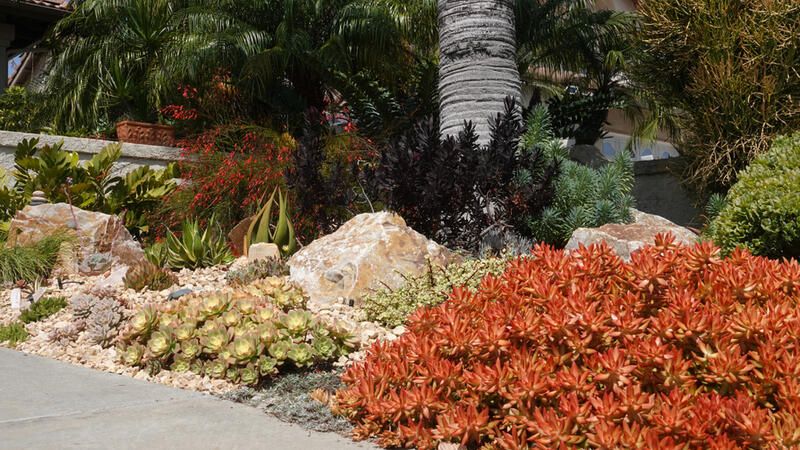
Imagine a world where you could put in as little effort as possible but still look fantastic. The dream, am I right? Well, when it comes to these strong, beautiful babies, that is the literal case. Low-maintenance plants that are drought resistant with colors and shapes that can't help but put you in a sense of awe and serenity and well, there are so many drought-tolerant plants to choose from!


Function, flair, fashion, and fads are no longer applicable. We must choose hardy, independent plants that don't need a lot of water (also known as having drought tolerance) if we want our backyards to be lush and lovely. Having a heat and drought-resistant ornamental garden is the new must-have!
Xeriscaping, commonly referred to as water-conserving gardening, is a means to maintain everything's health and beauty without straining the earth's finite water resources. It is highly anticipated that the seasonal drought conditions in the USA are here to stay. Why not take advantage and play by the new rule book by finding ways to look stunning even when under pressure?
The Beauty Behind Plants That Are Drought Tolerant
Fortunately, we can find some extremely attractive drought-tolerant plants that demand little moisture with some careful planning and perseverance.
Many drought-tolerant plants have internal mechanisms for saving moisture. For instance, the fleshy, plump leaves of cacti and succulents retain more moisture. Other plants have deep tap roots that can penetrate dry, crispy soil and still find a cool, damp ground. While other plants, including bulbs, corms, and rhizomes, can store moisture in their thick root systems. Due to these adaptations, they are at their best during drought and other times of scarcity.
However, the beauty of it all always shines through. You'd be surprised by how many drought-resistant shrubs, trees, vines, flowers, and grass exist. They are a dime a dozen, and they aren't going to break the bank or cut down on that free time. From every shape, size, color, and style you'd crave, there is a drought-tolerant baby to go with it. Let's get started.
You can use dry soil, soggy soil, poor soil, dry weather, warm weather, or hot weather to create a luscious and beautiful garden. With low-maintenance decors like rock gardens, tough flowering plants, and blanket flowers, you can build a wonderland in your yard!
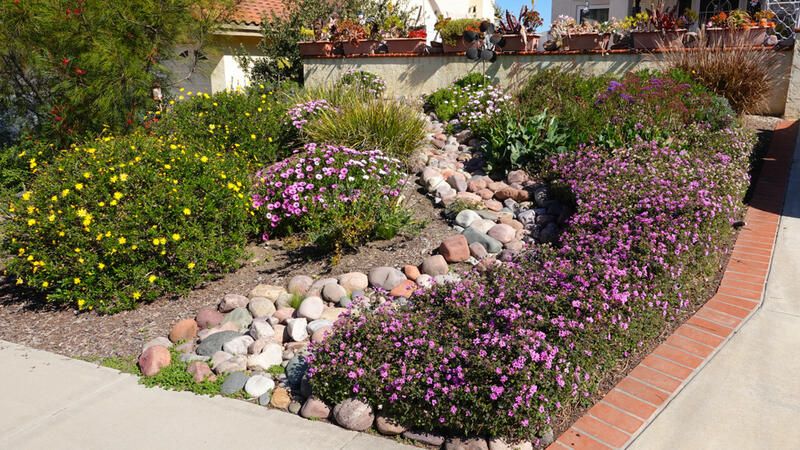
Get It Done Quickly
Before we dive into our plentiful list of drought-tolerant plants, we do want to encourage you to not get overwhelmed. There are tons and we mean tons of options that we wouldn't even be able to list them all. If you feel like the mass number of choices will confuse you or frankly, you just don't have time to research and plan which drought-tolerant plants go with which, consider contacting a professional.
Getting professionals involved is not as drastic as you might think, they are professionals for a reason. From simply choosing plants to designing your entire yard with them, they are here to help. Now there are a bunch of design websites you can go to that help you 3D design your yard and try out different options, our personal 'fav' though has to be Shrubhub.com
Shrubhub is affordable, easy, and quick. They offer free phone & plant consultations, so we recommend giving them a call so you can ask all the questions you deem fit. Currently, they're running a 70% off sale so we'd catch them now if you're interested.
Now back to our strong yet beautiful drought-tolerant plants!
Turning Your Yard into Eden: Drought Friendly Edition
Even if there is a longer period without rain in your neighborhood, there are many drought-tolerant shrubs, trees, vines, and flowers that can survive and look fantastic. You may cut down on the time and money you spend watering your garden by using these plants. Some plants even favor nutrient-poor soil, so you won't often need to apply fertilizer when growing them.
Hint: Many drought-tolerant plants native to the sandy, sunny Mediterranean region require little water. These plants contain certain herbs, like thyme and oregano, so you can give your drought-tolerant garden an edible element.
Enough chatting let's get into some of our favorite drought-tolerant plants!
Aloe (Aloe spp.)
Aloe, a genus of flowering succulents with numerous species, forms substantial rosettes and does well in hot, dry environments. The aloe vera plant is a well-known species. However, aloe species including tiger aloe, soap aloe, coral aloe, and jewel aloe are also suitable for landscaping. Aloe plants often have grey to brilliant green leaves, occasionally with a striped or mottled look, depending on the type.
Unless there has been raining, most aloe plants need watering every other week or so during the summer. Additionally, the combination of the wetter weather and milder temperatures throughout the winter usually gives plants enough water to live without additional irrigation. If you have an aloe plant in a pot, wait between waterings until the soil is fully dry. Aloe will start to shrivel and rot if it's sitting in wet soil, so use a potting mix that drains well and a container with enough drainage holes.
-
USDA Hardiness Zone: 10 - 12
-
Soil Requirements: Well-draining soil that is dry and sandy
-
Sun Exposure: Full sun
-
Color Variations: Yellow blooms
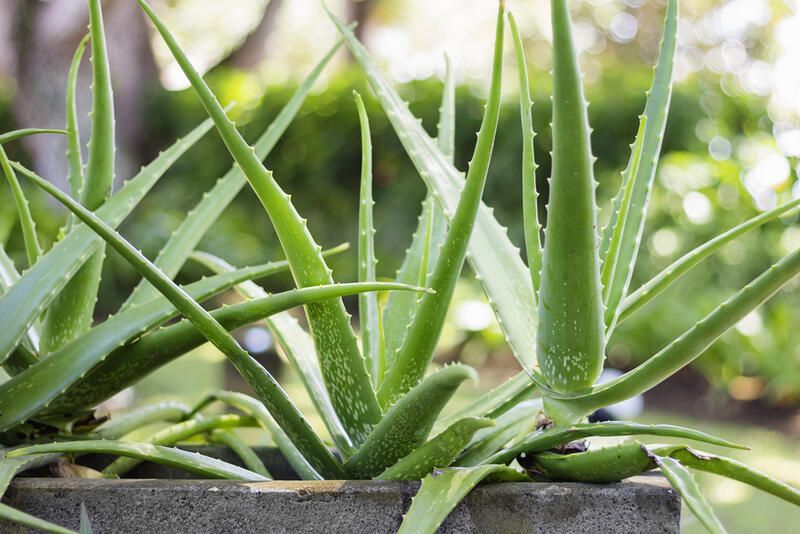
Wild Lilac (Ceanothus spp.)
Lilac shrubs that grow in the wild are fragrant and attractive. They can be utilized in a dry landscape as screens, hedges, ground covers, borders, and more because they are drought-tolerant and evergreen. Although California is home to the majority of wild lilac species, some also thrive in the eastern United States, the Rocky Mountains, the Pacific Northwest, and Mexico. Some drought-tolerant plants spread out and grow low, while others grow erect and are bushy.
To encourage a plant's healthy growth, water it once a week. Your shrub won't normally need water after that unless there is a protracted dry spell. Additionally, you probably won't require fertilizer unless your soil is extremely poor. To keep the shrub in shape, only remove a third of it annually. A shrub can live for 10 to 25 years on average.
-
USDA Hardiness Zone: 7 - 10
-
Soil Requirements: Average well-draining soil that has dry to medium moisture.
-
Sun Exposure: Full sun
-
Color Variations: Purple, blue, or white flowers
Artemisia (Artemisia spp.)
Artemisia's plant genus contains hundreds of species, including hardy shrubs and herbs. For instance, this genus includes the culinary herb tarragon (Artemisia dracunculus). These drought-tolerant plants frequently have delicate leaf designs and scented silvery foliage or white leaves. With decorative grasses, succulents, and other drought-tolerant plants, they look great in mixed borders. Southernwood (Artemisia abrotanum), California sagebrush (Artemisia californica), and white mugwort are a few species that are frequently used in landscaping (Artemisia lactiflora).
There are hundreds of species in the plant genus Artemisia, which also includes hardy shrubs and plants. For instance, this genus contains tarragon, a culinary herb (Artemisia dracunculus). These plants usually have aromatic silvery grey or white leaves with elegant leaf patterns. They look fantastic in mixed borders with ornamental grasses, succulents, and other drought-tolerant plants. Among the species that are widely utilized in landscaping are Southernwood (Artemisia abrotanum), California sagebrush (Artemisia californica), and white mugwort (Artemisia lactiflora).
-
USDA Hardiness Zone: 4 - 8
-
Soil Requirements: Rich soil that is well draining with dry to medium moisture.
-
Sun Exposure: full sun
-
Color Variations: yellow-white blooms
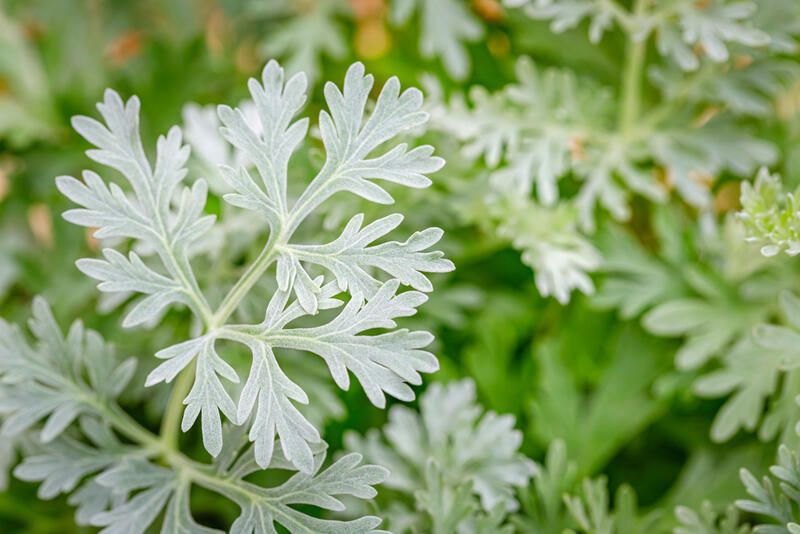
Trumpet Vine (Campsis radicans)
Although they may grow in a variety of environments, trumpet vines prefer lean to ordinary soil with average precipitation. Trumpet vines are drought-tolerant blooming vines. Bright green leaves emerge on the young vines and become dark green foliage as they age. In the summer, they have eye-catching orange or red blooms that draw hummingbirds.
These plants have a long lifespan and regenerate in the spring after each winter's death. Although they prefer some shade in hot climes, they flower best in direct sunlight. In general, you won't need to water existing vines unless there is a prolonged dry spell or an exceptionally hot spell. Pruning trumpet vines to stop them from spreading is frequently the most upkeep that gardeners must perform. The vines can suffocate nearby plants since they self-seed and grow new plants from underground stems.
-
USDA Hardiness Zone: 4 - 9
-
Soil Requirements: Average well-drained soil with dry to medium moisture
-
Sun Exposure: Full sun to partial shade
-
Color Variations: Red or orange blooms
Artichoke (Cynara cardunculus)
This is the same artichoke you usually eat, so yes. Artichoke plants grow erect and can grow to a height of three to six feet tall. Their leaves, which can be green or gray-green in hue, are deeply lobed and have sharp spines. They also have rather thick stems. The huge flower spikes of artichokes are what is sold in the produce section of supermarkets. These buds open into dazzling purple blooms when let to blossom rather than being picked.
It can be an attractive ornamental plant that yields delicious artichokes from fall to spring if you reside in an area with temperatures similar to the southern Mediterranean, which is where the artichoke originated. It is a low-maintenance, drought-tolerant perennial that only requires minimal watering after it has become established in this type of climate. Make sure the plant is grown in soil that drains well and is protected from severe winds.
-
USDA Hardiness Zone: 7 - 11
-
Soil Requirements: Rich well-drained soil with medium moisture
-
Sun Exposure: Full sun
-
Color Variations: Blue-violet blooms
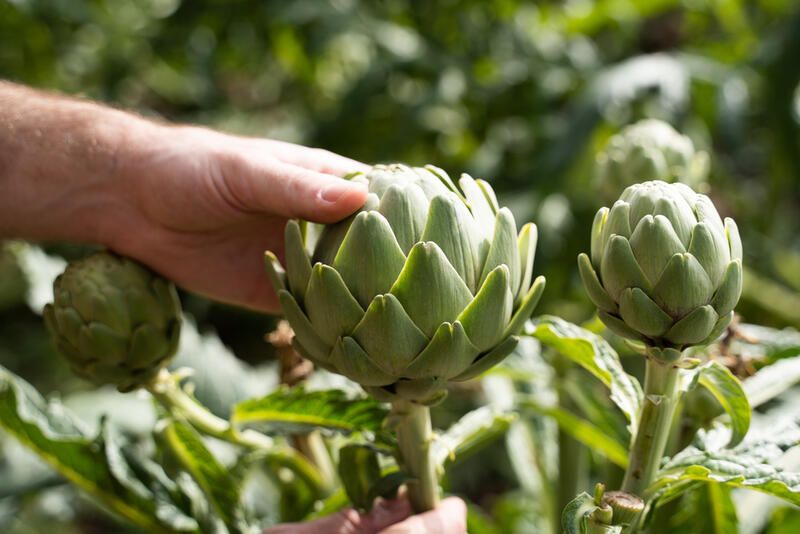
Sea Holly (Eryngium planum)
Low-maintenance perennials, sea hollies grow in basal clumps of dark green leaves that develop into higher flower stems with eye-catching purple-blue flowers that resemble tiny lighting thistles from midsummer to fall. Sea holly is a European native with green or blue cones and a unique collar of silver, white, green, or bluish-purple bracts. Depending on the kind, the stems can be green or silvery blue and the hues have a painted-on, metallic shine that shifts in the light.
Once fairly specialized, sea holly plants are now found in a variety of garden centers and shops in a small selection. The optimum time to plant mature plants is in the spring when sea holly will grow swiftly and nursery plants will flower for the first time. Plant seeds in the late summer or early fall, and they will sprout in the spring. These perennials have a lengthy lifespan once they are planted.
-
USDA Hardiness Zone: 5 - 9
-
Soil Requirements: Sandy well-draining soils
-
Sun Exposure: Full sun and well
-
Color Variations: Blue and purple
Russian Sage (Perovskia atriplicifolia)
Russian sage is a true garden warrior with 2- to 5-foot stems that are of various colors of purple and blue. It can withstand cold, drought, and bad soil. It won't disappoint you as long as you grow it in a sunny location.
Late in the growing season, Russian sage blooms with striking, blue flower spikes that give the garden a boost. This resilient native of Asia thrives in hot, dry environments and neglect.
-
USDA Hardiness Zone: 4- 6
-
Soil Requirements: Well-draining soils
-
Sun Exposure: Full sun
-
Color Variations: Purple-blue blooms
Pencil Cactus (Euphorbia spp.)
This Euphorbia species, sometimes known as sticks on fire or Indian tree spurge, is an eye-catching, drought-tolerant shrub or tree that can reach heights of 20 to 30 feet tall. Its thin stems are covered in tiny, oval leaves that come in a variety of colors, including green, red, orange, and yellow. If the drought-tolerant plant gets full sun, the colors are more vivid.
This plant can withstand drought because it is adapted to semi-arid tropical areas. It favors dry conditions and quickly drains soil. Overwatering your plant should be avoided because it might result in bacterial and fungal diseases. New drought-tolerant plants should be watered once a week, but mature plants should only be watered during extended dry spells. Additionally, the plant prefers a lack of organic matter in the soil, so you probably won't need to fertilize.
Warning: When working with this plant, put on gloves. It releases a poisonous sap that can aggravate skin, temporarily impair vision if it gets in the eyes, and cause other allergic reactions.
-
USDA Hardiness Zone: 11 - 12
-
Soil Requirements: Average soil, adequate drainage with dry to medium moisture
-
Sun Exposure: Full sun
-
Color Variations: Yellow blooms
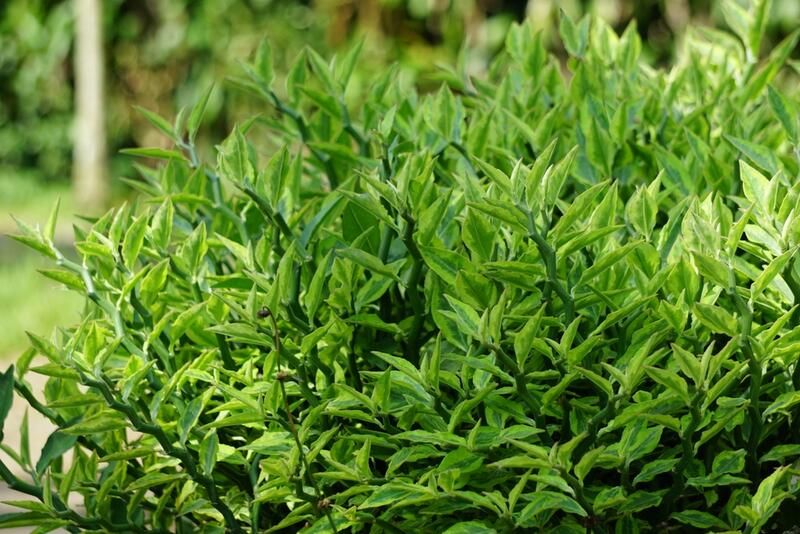
Lavender (Lavandula spp.)
Stunning spikes of bluish-purple flowers are produced by lavender plants throughout the growing season. Throughout the genus, lavender plants have different looks. As an illustration, while some have plain narrow oval leaves, others have more elaborate foliage. Additionally, some are small plants while others develop into shrubs that can grow to a height of a few feet tall. Lavender's silvery-green foliage and flowers are frequently picked for their oils or dried and used in potpourris and sachets because of their relaxing scent.
Lavender is a drought-tolerant plant that naturally grows in the arid, sandy soil of the Mediterranean and has adapted to require minimal water. During the first year of growth of your plant, keep the soil evenly moist. However, once that is done, you usually only need to water if the top few inches of soil are dry. Additionally, to encourage additional blossoming during the growing season, routinely clip or pinch off spent blooms.
-
USDA Hardiness Zone: 5 - 6
-
Soil Requirements: Average well-drained soil with dry to medium moisture
-
Sun Exposure: Full sun
-
Color Variations: Purple blooms
Beardtongue (Penstemon spp.)
About 250 species of flowering plants in this genus are typically found in North America. They may grow in a variety of environments, including plains, mountains, and deserts. On inflexible stems, bearded tongue plants generally feature clusters of tube-shaped blooms. They work wonders at luring bees and hummingbirds to your garden.
About 250 species of flowering plants in this genus are typically found in North America. They may grow in a variety of environments, including plains, mountains, and deserts. On inflexible stems, bearded tongue plants generally feature clusters of tube-shaped blooms. They work wonders at luring bees and hummingbirds to your garden.
-
USDA Hardiness Zone: 3 - 8
-
Soil Requirements: Average well-draining soil with dry to medium moisture
-
Sun Exposure: Full sun
-
Color Variations: White blooms
Kangaroo Paw (Anigozanthos spp.)
There are only 11 species of the native Australian plant genus Anigozanthos (and multiple subspecies). Anigozanthos mangles, a red-and-green kangaroo paw, is the floral representation of Western Australia. At their base, the plants typically produce a rosette of long, green to gray-green leaves. And from this rosette, towering, leafless flower stalks appear.
Due to the sap that is stored in their roots, kangaroo paw plants can withstand extended periods of dryness where they normally thrive in dry, sandy environments. However, throughout the growing season, water your plant if there hasn't been any rain in about two weeks because they grow and flower best with a modest quantity of soil moisture. You probably won't need to water at all during the winter. Additionally, shield your plant from windy conditions and cold. Outside of the kangaroo paw's growing region, gardeners frequently have success overwintering their plants inside or in greenhouses.
-
USDA Hardiness Zone: 10 - 11
-
Soil Requirements: Rich, sandy soil with medium moisture that is well draining.
-
Sun Exposure: Full sun to partial shade
-
Color Variations: Red, yellow-green, or pink blooms
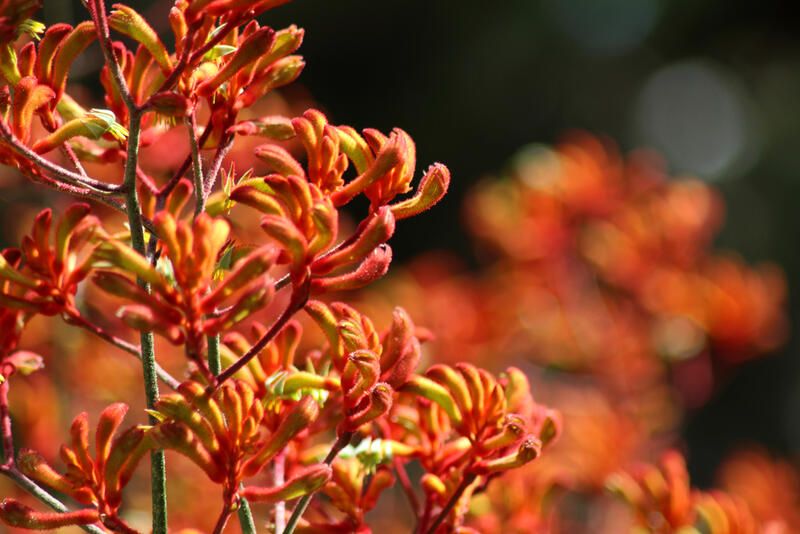
Other Favorites Worth the Mention
Other Drought Tolerant Perennials
-
English lavender (Lavandula angustifolia)
-
Globe thistle (Echinops ritro)
-
Purple coneflower (Echinacea purpurea)
-
Red bottlebrush (Callistemon citrinus)
-
Yarrow (Achillea spp.)
-
Foxglove beardtongue (Penstemon digitalis)
-
Carpet sedum (Sedum spp.)
-
Blanket flower (Gaillardia grandiflora)
-
Butterfly weed (Asclepias tuberosa)
-
Southernwood (Artemisia abrotanum)
Drought Resistant Trees
-
Bur oak (Quercus macrocarpa)
-
Eastern red cedar (Juniperus virginiana)
-
Maidenhair tree (Ginkgo biloba)
-
Golden raintree (Koelreuteria paniculata)
-
Eastern redbud (Cercis canadensis)
-
Mulga (Acacia aneura)
-
Kentucky coffeetree (Gymnocladus dioicus)
-
Common hackberry (Celtis occidentalis)
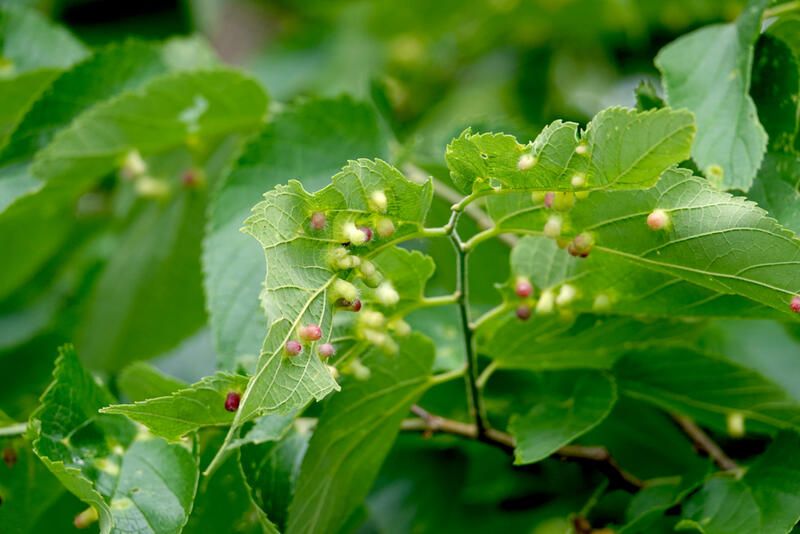
Drought Tolerant Flowers
-
African Daisy (Osteospermum spp.)
-
California Poppy (Eschscholzia californica)
-
Lantana (Lantana camara)
-
Cosmos (Cosmos bipinnatus)
-
French Marigold (Tagetes patula)
-
Globe Amaranth (Gomphrena globosa)
-
Licorice Plant (Licorice Plant)
-
Melampodium (Melampodium)
-
Moss Rose (Portulaca grandiflora)
-
Petunia (Petunia spp.)
-
Salvia (Salvia officinalis)
-
Spider Flower (Cleome)
-
Sunflower (Helianthus annuus)
-
Vinca (Catharanthus roseus)
-
Zinnia (Zinnia elegans)
-
Mexican Sunflower (Tithonia rotundifolia)
Drought Tolerant Ornamental Grasses
-
Big bluestem (Andropogon gerardii)
-
Blue oat grass (Helictotrichon sempervirens)
-
Elijah blue fescue (Festuca glauca)
-
Fountain grass (Pennisetum alopecuroides)
-
Leatherleaf sedge (Carex buchananii)
-
Pampas grass (Cortaderia selloana)
-
Panic grass (Panicum virgatum)
-
Purple needlegrass (Stipa pulchra)
-
Zebra grass (Miscanthus sinensis ‘Zebrinus’)
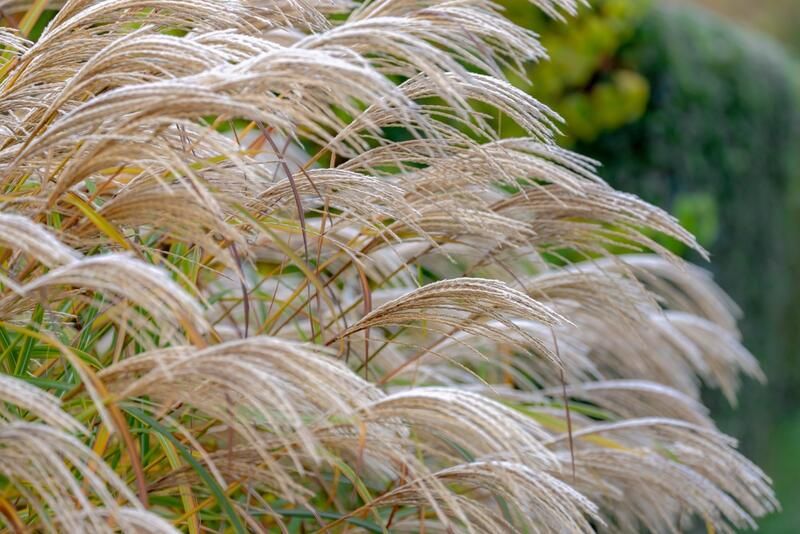
Psssstt..... We just did an entire article about ornamental grasses so check it out after this if you're interested!
Drought Tolerant Landscaping Tips & Tricks
-
=Replace a thirsty turf lawn with groundcovers that can withstand drought and are durable enough to be walked on, such as sedums or creeping thyme.
-
Add organic materials to the soil, like compost, to help it retain moisture. Skip the enriching amendments, loosen the soil before planting, and make sure there is enough drainage for plants that like lean soil.
-
To generate multi-seasonal interest that will persist long after the blooms have faded, choose plants with fascinating leaves, texture, structure, and contrasting shapes.
-
To keep weeds at bay and conserve moisture, mulch plants with a layer of organic material or small stones.
-
Install an effective watering system, like drip irrigation. To reduce water loss due to evaporation, water in the morning or evening.
-
Use hardscaping components to add structure and define places, such as patios, paths, and boulders. Add decorative accents that serve as focal points, like a bench, birdbath, or fountain. To slow water runoff, build pathways out of permeable materials like pea gravel.
-
Use a rock garden for decor in a dry landscape or rocky terrain for a low-maintenance early summer project.
-
Use bedding plants and a small tree for lining walkways and filling in empty spaces.
-
Try an herb garden for late spring for the best pesto and herb dressings all summer long.
-
Aromatic foliage and aromatic flowers are your friends! Use them to add a heavenly scent to your yard.
-
Become a master gardener by incorporating different elements and various plant types, especially those plants native to the area!
Get to Xeriscaping!


